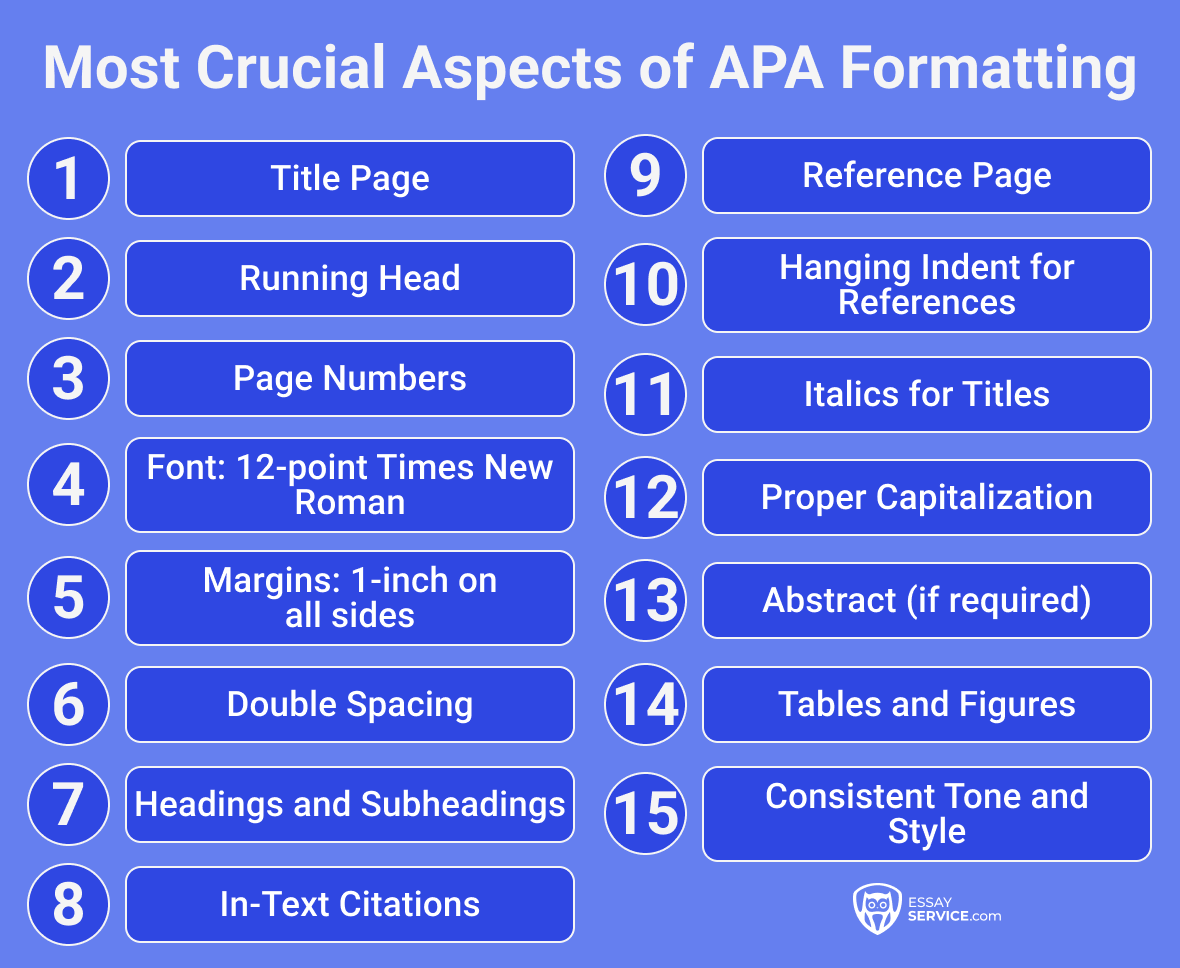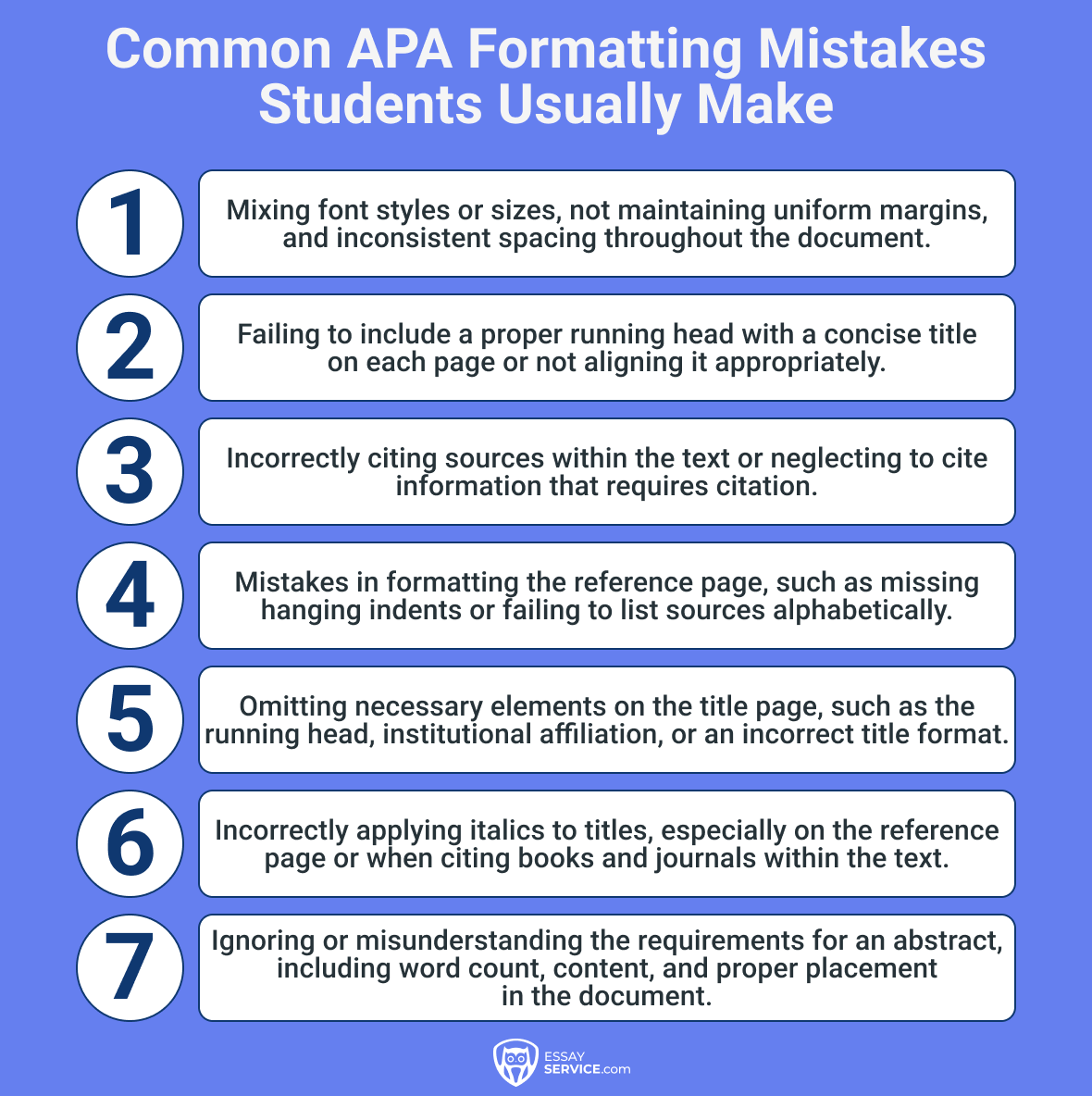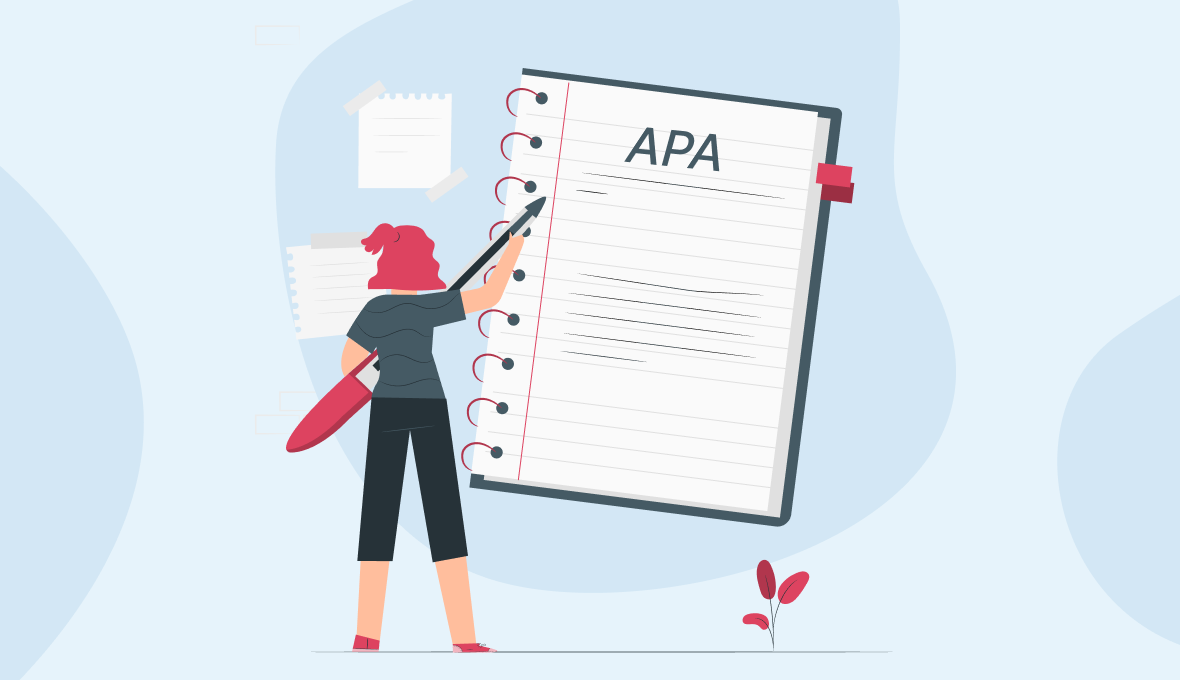
How to Write an Essay in APA Format: The Manual Used by Expert Writers
Welcome to the world of citation and formatting! If you find yourself puzzled by having to write an essay using the American Psychological Association (APA) format, you're in the right place. Understanding the guidelines of APA formatting is crucial for any student or scholar aiming to communicate their ideas effectively and professionally. In this article, we will study how to write an essay in APA format, providing clear insights, practical tips, and step-by-step guidance to help you produce an A-grade essay. For a quick resolution to your assignment, please consult our APA paper writing service.
What Is APA Format for an Essay?
APA (American Psychological Association) format is a standardized style for writing and formatting academic essays, particularly in the social sciences. It provides guidelines for various aspects of the writing process, ensuring clarity, consistency, and a professional presentation. In an APA-formatted essay, the title page includes the title of the essay, the author's name, and institutional affiliation. The main body of the essay follows specific rules for headings, citations, and references. Headings and subheadings are used to organize the content, facilitating readability. In-text citations provide credit to the sources used, and a reference page at the end of the essay compiles the full details of these sources, following a specific format.
One distinctive feature of the APA format for essay is its emphasis on a running head, a concise title placed at the top of each page, providing a quick reference to the essay's main title. Additionally, APA requires adherence to a specific font (usually Times New Roman, 12-point), double-spacing, and one-inch margins on all sides. The goal of the APA format is to maintain consistency across academic papers, making it easier for readers to understand the structure of the essay and locate information.
APA Style Essay General Requirements
Understanding this style is essential for any student or scholar engaging in academic writing. APA format guidelines provide a standardized framework for structuring essays in various disciplines, particularly in the social sciences. From the title page to the meticulous citation of sources and the overall layout, these requirements ensure a uniform and professional presentation of your work.
How to Use Numerals?
In APA format for essays, numerals are used to express numbers in a consistent and standardized manner across academic writing. Here are some guidelines for using numbers in the APA format:
Numbers 10 and Above:
- Use numerals for numbers 10 and above (e.g., 15, 27, 105).
Numbers Below 10:
- Spell out numbers below 10 (e.g., three, seven).
Mixed Numbers:
- Use numerals for a combination of numbers above and below 10 in the same sentence (e.g., 5 participants, 12 professors).
Beginning of a Sentence:
- Spell out numbers at the beginning of a sentence, even if they are 10 or above (e.g., Twenty participants were involved in the study).
Consistency in a Category:
- Maintain consistency within a category. If one number in a category is expressed as a numeral, use numerals for all numbers in that category (e.g., 3 scholars, 12 teachers).
Percentages and Decimals:
- Use numerals for percentages (e.g., 25%) and decimals (e.g., 2.5).
Ordinal Numbers:
- Use numerals for ordinal numbers (e.g., 1st, 3rd, 10th).
Dates and Ages:
- Use numerals for specific dates (e.g., June 5, 2022) and ages (e.g., a 6-year-old child).
Statistical and Mathematical Functions:
- Use numerals for statistical and mathematical functions, such as percentages, statistical results, and equations.
Units of Measurement:
- Use numerals for units of measurement (e.g., 5 meters, 10 kilograms).
Punctuation
APA format style follows specific punctuation rules to ensure consistency and clarity in academic writing. Here are some key punctuation rules:
Commas:
- Use commas to separate elements in a series (e.g., apples, oranges, and bananas).
- Place a comma before the conjunction in a compound sentence (e.g., The study was conducted in May 2021, and the results were published in June).
Semicolons:
- Use semicolons to separate items in a series when the items themselves contain commas (e.g., The participants included individuals from New York, New York; Boston, Massachusetts; and Chicago, Illinois).
Colons:
- Use a colon to introduce a list when preceded by a complete sentence (e.g., The following items were used in the experiment: a stopwatch, a questionnaire, and a computer).
Parentheses:
- Use parentheses to enclose supplementary or explanatory material within a sentence (e.g., The experiment was conducted in a controlled environment (room temperature, humidity, and lighting conditions were regulated)).
Quotation Marks:
- Use double quotation marks for direct quotations (e.g., According to Smith (2019), "APA format style provides guidelines for academic writing.").
- Single quotation marks are used within double quotation marks for a quote within a quote (e.g., The participant stated, "The instructions were clear, and I followed them to the letter, saying, 'I understood the task.'").
Dashes:
- Use an em dash (—) to set off information within a sentence (e.g., The results—though unexpected—were significant).
- No spaces should appear before or after an em dash.
Apostrophes:
- Use apostrophes to indicate possession (e.g., the participant's responses).
- Use apostrophes for contractions (e.g., it's for "it is" or don't for "do not").
Hyphens:
- Use hyphens in compound words (e.g., well-known study).
- Use hyphens in adjective compounds before a noun (e.g., a time-consuming task).
Alphabetization
When doing an essay in APA format, alphabetization is an essential aspect, particularly when creating reference lists or bibliographies. Here are some key rules for alphabetizing entries in APA format:
Author Names:
- Alphabetize by the surname of the first author for each source. Ignore titles, such as Dr., Mr., or Mrs., and alphabetize based on the last name.
Multiple Authors:
- If a work has multiple authors, alphabetize based on the surname of the first author. For subsequent authors, follow the same rule, separating each author's name with a comma.
Corporate Authors:
- Alphabetize works with corporate or group authors by the first significant word in the name.
No Author:
- If a source has no author, alphabetize it by the first significant word in the title.
Same Author, Different Works:
- If an author has multiple works, arrange them chronologically. If the publication years are the same, alphabetize by the title of the work (excluding articles like "a," "an," or "the").
Works with the Same Author and Date:
- If you have multiple works by the same author published in the same year, differentiate them by adding lowercase letters (a, b, c, etc.) after the publication year. Alphabetize these entries based on the title.
Anonymous Works:
- If a work is anonymous, alphabetize it by the title.
Reference List:
- Alphabetize the entire reference list by the first significant word of each entry.
Paragraph Alignment and Indentation
For those learning how to write an APA essay, the general rules for paragraph alignment and indentation help maintain consistency and readability. Here are the key guidelines:
Alignment:
- Align text to the left; do not justify the text.
Indentation:
- Use a standard five-space indent for the first line of each paragraph. This is achieved by pressing the "Tab" key once.
First Page Indentation:
- The first page of the main body of the essay, typically after the title page and abstract, does not require a special first-line indentation. Start the text flush with the left margin.
Block Quotations:
- For block quotations (quotations longer than 40 words), indent the entire quotation by half an inch (approximately 1.27 cm) from the left margin. Do not use quotation marks for block quotations.
References:
- In the reference list, use a hanging indent for each reference entry. The first line starts flush with the left margin, and subsequent lines are indented by 0.5 inches.
Manuscript Format:
- When preparing your manuscript for submission, set the document to have 1-inch margins on all sides.

APA Outline Format Guidelines

It is common for instructors to request or recommend outlines as part of the APA format essay prewriting process. Here are general suggestions for creating an outline:
Use Roman Numerals:
- Begin your outline with Roman numerals (I, II, III) to represent the main sections or major ideas of your essay.
Capital Letters:
- Use capital letters (A, B, C) to denote subpoints or subtopics within each main section.
Arabic Numerals:
- Further subdivide your outline with Arabic numerals (1, 2, 3) for more specific details under each subpoint.
Lowercase Letters:
- Use lowercase letters (a, b, c) for additional subdivisions or supporting details.
Parallel Structure:
- Maintain a parallel structure throughout your outline. If the first main section begins with a complete sentence, ensure the others do as well.
Consistency:
- Be consistent in your use of symbols and indentation. If you use Roman numerals for one main section, use them for all main sections.
Indentation:
- Use consistent indentation for each level of your outline. Typically, you might use a 0.5-inch indent for each level.
Full Cover Page for an APA Style Essay
In APA essay format, a full cover page is required for many scholarly papers. The cover page, also known as the title page, serves as the first page of your document.
Title:
- The essay's title should be centered in the middle of the page. Use title case (capitalize the major words).
Author Information:
- Below the title, type your full name. This should be centered and positioned a few lines below the title.
Affiliation:
- Below your name, provide your institutional affiliation (e.g., the name of your university or institution). This information is also centered on the page.
Author Note (if applicable):
- If there are multiple authors or you want to include additional information about the author(s), such as departmental affiliations or acknowledgment of funding, you can include an author note. Place this note as a text block at the bottom of the cover page.
Running Head:
- In the header section of the cover page, include a running head. This is a concise version of the title and should be in uppercase letters. The running head is aligned to the left and should not exceed 50 characters, including spaces.
Page Number:
- Insert the page number in the top-right corner of the APA essay in the header section. This page number is preceded by the words "Running head."
Correct Page Header
To learn how to write an essay in APA format, insert a correct page header in the upper-left corner of each page, including the cover page.
Running Head:
- The page header, often called the running head, is a shortened version of your essay's title. It should be in uppercase letters and should not exceed 50 characters, including spaces.
- Place the running head flush left at the top of the page.
Page Number:
- Immediately to the right of the running head, insert the page number.
- The page number should be flush right.
Formatting:
- Use a 12-point font, preferably Times New Roman, for the running head and page number.
- Ensure that the running head is in uppercase letters and is left-justified.
Cover Page:
- On the cover page, the running head is preceded by the words "Running head:" followed by a colon.
- On subsequent pages, the words "Running head:" are omitted.
Headings and Subheadings
Headings and subheadings are used to organize the content of an essay and provide a clear hierarchy of information. The APA formatting guidelines for headings are as follows:
Levels of Headings:
- There are five levels of headings in APA format, each indicating a different level of importance and hierarchy. These are labeled as follows:
- Level 1: Centered, Boldface, Uppercase and Lowercase Heading
- Level 2: Left-aligned, Boldface, Uppercase and Lowercase Heading
- Level 3: Indented, boldface, lowercase paragraph heading ending with a period.
- Level 4: Indented, boldface, italicized, lowercase paragraph heading ending with a period.
- Level 5: Indented, italicized, lowercase paragraph heading ending with a period.
Numbering:
- Only levels 1 and 2 headings are typically used in student essays. Levels 3 to 5 are reserved for more complex documents.
- Do not use numbers or letters to label headings; use the formatting styles described above.
Capitalization:
- Capitalize the first word of the heading and any major words within the heading.
Bold and Italics:
- Boldface and italics are used to distinguish different levels of headings. Level 1 headings are bold, while Level 3, 4, and 5 headings are both bold and italicized.
Alignment:
- Level 1 headings are centered on the page. Level 2 headings are left-aligned.
- Level 3, 4, and 5 headings are indented and run into the text.
Consistency:
- Maintain consistency in the formatting of headings throughout the document.
Abstract
In an APA format essay, the abstract serves as a succinct summary of your research paper, providing readers with a brief overview of the study's purpose, methodology, results, and conclusions. The abstract is typically limited to 150 to 250 words, making brevity and clarity essential. It should be a standalone section, appearing on a separate page after the title page, and its contents should reflect the key aspects of your research without delving into excessive detail. The abstract follows a structured format, with specific sections for objectives, methods, results, and conclusions. It offers a snapshot of the essay, enabling readers to grasp the core elements of the research quickly.
When formatting the abstract, ensure it is double-spaced, and use a legible 12-point font such as Times New Roman. The page header, including the running head and page number, should be present on the abstract page. Remember to adhere to APA format guidelines for title cases, where major words are capitalized in the title, and to avoid abbreviations and unnecessary details in the abstract. By carefully crafting your abstract in accordance with these guidelines, you provide readers with a clear and concise preview of your research, inviting them to delve deeper into the main body of your essay for a comprehensive understanding of your work.
Table of Contents
The table of contents is an optional element typically included in longer, more complex documents, such as theses or dissertations. However, everyone who wants to learn how to write an essay in APA format has to know how to format a table of contents. Begin by listing the major sections of your essay along with their respective page numbers. Use a consistent font and formatting throughout, such as Times New Roman, 12-point font size, and double-spacing.
Align the entries to the left, and use dot leaders (periods or dots) to connect the section titles with their corresponding page numbers. Ensure that the entries in the table of contents mirror the headings and subheadings in the main body of your document, maintaining the same hierarchy. While a table of contents is not a mandatory component in shorter papers, it can enhance the organization and accessibility of more extensive documents, providing readers with a roadmap to navigate the various sections of your work.
References Page
To format a reference page in APA format, begin by placing the word "References" at the top center of a new page. List all sources cited in your essay in alphabetical order by the last name of the first author for each entry. Each reference entry should have a hanging indent, with the first line flush left and subsequent lines indented by 0.5 inches. Include the author's last name followed by their initials, the publication year in parentheses, the work title in sentence case (only the first word and proper nouns capitalized), the source's publication information, and, when applicable, the DOI or URL.
Provide consistency in formatting throughout the reference page, paying attention to details such as italics for book and journal titles and proper punctuation. Always consult the latest edition of the APA Publication Manual for any updates or specific details related to reference page formatting.
Tables and Figures
In APA format, tables and figures are used to present complex data and enhance the overall understanding of the research. Tables are used for numerical data and are labeled with a "Table" number and title above the table. The table title is italicized and placed flush left. Figures, which include charts, graphs, images, and other non-text elements, are labeled with a "Figure" number and title below the figure. The figure title is italicized and placed flush left. Both tables and figures should be numbered consecutively in the order they appear in the text.
Additionally, provide clear and concise notes beneath tables and figures to explain abbreviations, symbols, or any additional information. It is crucial to refer to tables and figures within the text by their corresponding numbers. The formatting for tables and figures should be consistent, and specific guidelines exist for elements such as font size, spacing, and alignment. Always refer to the latest edition of the APA Publication Manual for any updates or detailed specifications related to formatting tables and figures.
How to Write an APA Format Essay in Four Steps?
As you learn how to cite sources properly and operate your list of references, let’s cover the essentials of how to write an essay in APA format.

Choose a Great Topic
Begin your APA format essay by selecting a well-defined and relevant topic. Consider your interests, the essay requirements, and the scope of the essay. Ensure your chosen topic aligns with the essay's purpose and is suitable for an academic audience. As you narrow down your focus, explore potential research questions that will guide your investigation and contribute to the overall significance of your essay. This thoughtful selection process at the outset will lay a solid foundation for a well-structured and purposeful essay.
Gather Evidence, Write a Thesis
After choosing a topic, research extensively to gather relevant information and supporting evidence. Develop a clear thesis statement that articulates the main argument or purpose of your essay. Ensure the thesis is specific, concise, and indicative of the direction your paper will take. Delve into academic journals, books, and reputable sources to build a comprehensive understanding of your subject matter. This thorough research not only strengthens your thesis but also positions your essay within the broader scholarly conversation on the chosen topic.
Prepare Your First Draft
With your research and thesis statement in hand, move on to the APA essay drafting stage. Structure your essay with clear headings and subheadings, following APA format guidelines. Introduce and develop your ideas logically, supporting them with evidence and proper citations. Ensure consistency in font, size (usually 12-point Times New Roman), and double-spacing throughout the main body of your essay. This meticulous attention to formatting details, coupled with a well-organized presentation, enhances the readability and professionalism of your work, aligning it with the standards of academic writing.
Review, Revise, Repeat
Finally, before submitting your APA format essay, engage in thorough proofreading. Check for grammatical errors, proper citation formatting, and overall clarity of expression. Make sure your essay follows APA format guidelines for in-text citations and the reference page. Proofreading is a critical step to polish your work and present a well-crafted, error-free essay. Taking the time for careful proofreading ensures that your ideas are communicated effectively, leaving a lasting and positive impression on your readers.
Frequently asked questions
New posts to your inbox!
Your submission has been received!
.png)


